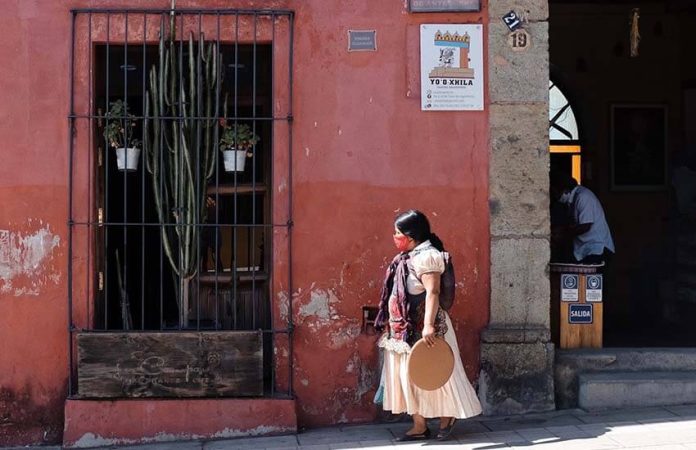Gentrification fueled by an influx of foreign tourists and residents has had a range of negative impacts on Oaxaca city and its Mexican-born residents, according to a study by a state government-affiliated research center.
Completed by researchers with the Center of Social Studies and Public Opinion (CESOP) at the Oaxaca Congress, the analysis notes that the number of foreign residents in the southern state has increased by more than 400% since 2000.
Many of those residents are in Oaxaca city, while foreign visitors have flooded into the state capital in recent years as it has become an increasingly popular tourism destination known for its varied and unique food, rich culture, pretty colonial streets, and as the home of Mexico’s hippest spirit – mezcal.
Some of those visitors – such as digital nomads from the United States and other wealthy countries – stay in the city for extended periods, renting properties through websites such as Airbnb in central areas including the neighborhoods of Xochimilco and Jalatlaco.

As they primarily enter the country on tourist visas, they are not counted in official data on foreign residents, although they are, for all intents and purposes, living here – and changing the face of certain neighborhoods, such as the aforesaid Oaxaca city colonias and Roma and Condesa in Mexico City.
According to the CESOP study, the economic benefits brought about by the presence of foreign tourists and residents have taken precedence over the preservation of social values and customs and traditions in certain parts of Oaxaca city. However, there has been scant consideration of the negative impacts the outsiders generate, the researchers said, among which are higher rents and food prices, noise pollution due to the influx of new businesses (which have taken the place of older, more traditional ones), insecurity, changes to the urban landscape and “symbolic dispossession,” as some locals have been priced out of neighborhoods where they formerly lived.
Xochimilco, Jalatlaco and the tourism precinct based on the Macedonio Alcalá pedestrian street “have suffered enormous changes” as a result of gentrification, according to an El Universal newspaper report on the CESOP study. Buildings that were previously homes and workshops are now restaurants, cafes, stores (including many that cater to well-heeled tourists’ needs and wants) and short-term accommodation advertised on Airbnb and other similar websites.
The researchers, Arturo Méndez Quiroz and Mario Samuel Ceballos, assert that authorities haven’t done enough to mitigate the negative impacts of gentrification or stop them from spreading to other parts of Oaxaca city. For example, there are no regulations on short-term housing offered by online accommodation marketplaces, the researchers said.
Federal and state regulations that “guarantee the balance between urban development and the protection of natural, historic, architectural, cultural and artistic heritage” are urgently needed, the study said. Those regulations should prevent “segregation and territorial exclusion,” Méndez and Ceballos insisted.
In Xochimilco, a traditional – and now trendy – neighborhood, costs for housing and other essentials have increased significantly while local customs and traditions, and the people who practice them, are no longer at the center of the area’s cultural life, having been pushed to the periphery by new arrivals — of both people and businesses.
Facades of buildings in the area have undergone “severe changes” that could even be considered “transgressive of the original architecture,” the study said.
In Jalatlaco – named by Time Out magazine as one of the 50 coolest neighborhoods in the world in 2019 – investors have snapped up old, rundown properties and turned them into tourism-oriented businesses.
“The leather workshops of yesteryear are now occupied by hotels, hostels, gourmet restaurants [and] boutique stores [while] houses have been transformed into numerous cafes,” the study said.
One person who was forced out of the neighborhood due to high rents was Demetrio Barrita, an artist.
“In 2001, he paid 1,000 pesos [per month] for his studio and … in 15 years [the rent] rose to 10,000, which led him to abandon it. The same premises in 2021 rented for 20,000 pesos [about US $1,000] a figure that can be considered very exorbitant,” the researchers said.
They also said that Jalatlaco has been degraded in a cultural and traditional sense by the changes brought about by gentrification.
The study did acknowledge that the influx of foreigners and the associated gentrification is not entirely a bad thing. Among the positives cited were increased revenue for some local businesses, job creation and urban renewal.
With reports from El Universal
